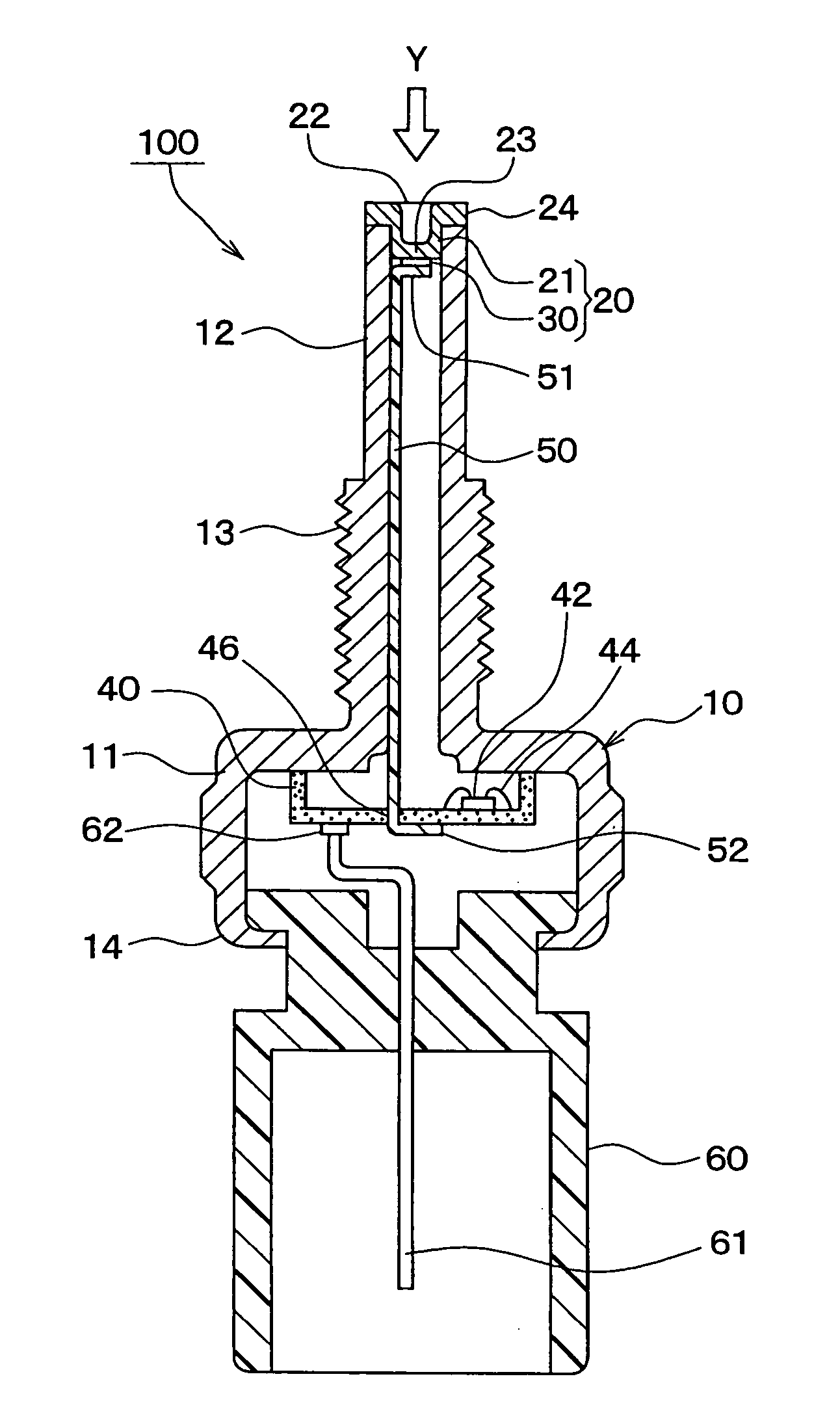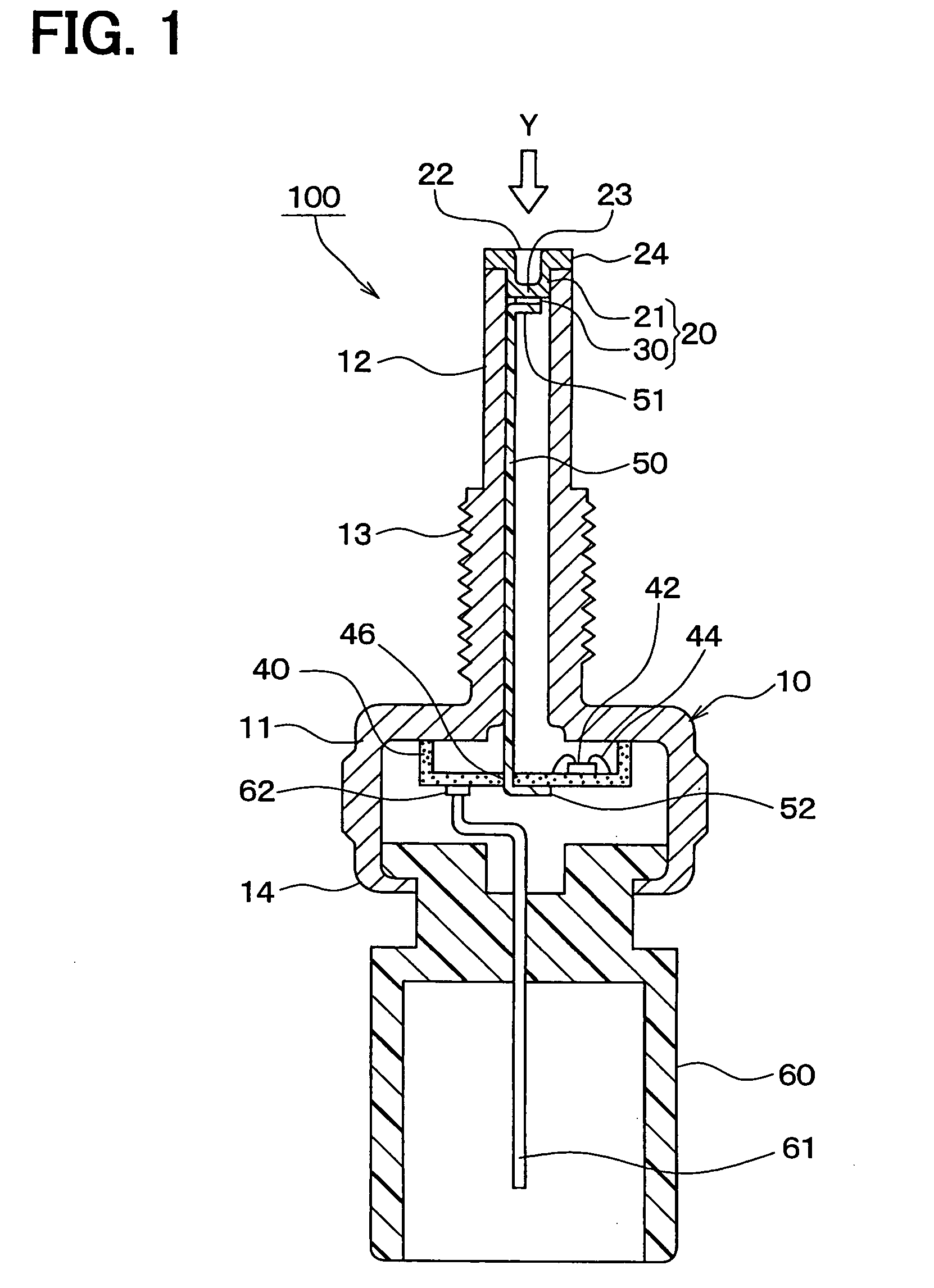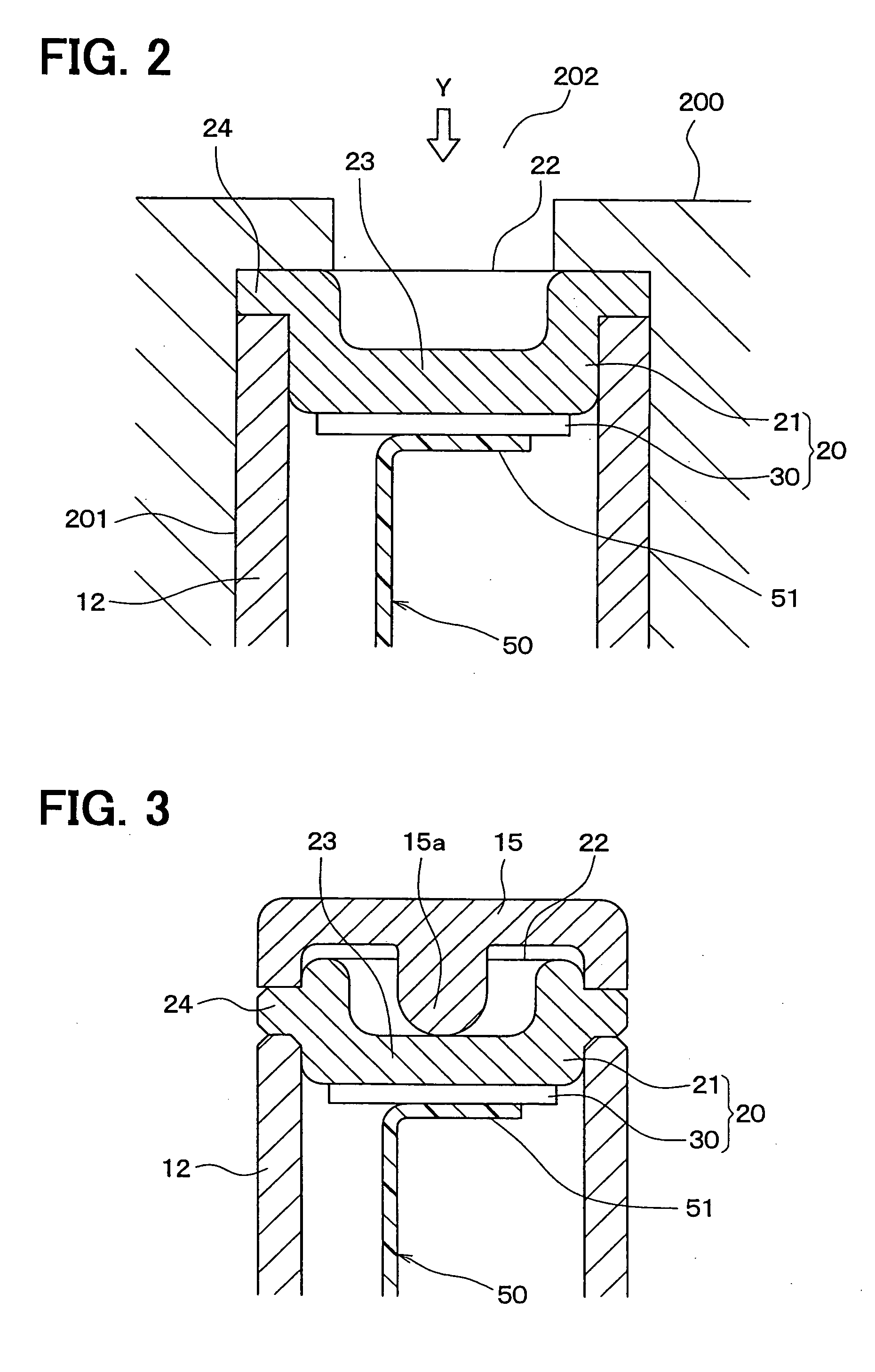Pressure detecting apparatus
a detection apparatus and pressure sensor technology, applied in the field of pressure sensors, can solve the problems of reducing the inability to measure knocking signals, and the weight of the rod is increased, so as to reduce the stress of removing the pressure sensitive element from the printed circuit board, reduce the stress applied to the bump, and reduce the effect of stress
- Summary
- Abstract
- Description
- Claims
- Application Information
AI Technical Summary
Benefits of technology
Problems solved by technology
Method used
Image
Examples
first embodiment
[0051] (First Embodiment)
[0052]FIG. 1 is a sectional view for schematically showing an entire structure of a pressure detecting apparatus 100 according to a first embodiment of the present invention. Also, FIG. 2 is an enlarged view for representing a portion of FIG. 1, which is a top end of the apparatus 100. It should be noted that in FIG. 2, an engine block 200 is also represented.
[0053] Although usage of the pressure detecting apparatus 100 is not limited, this pressure detecting apparatus 100 may be applied as a combustion pressure sensor, while a pipe portion 12 of a housing 10 is mounted in a mounting hole 201 formed in, for example, an engine block 200 of an automobile as an object to be detected by way of a screw coupling manner (see FIG. 2). This combustion pressure sensor detects pressure (namely, internal cylinder pressure) within a combustion chamber 202 as a detecting pressure.
[0054] The housing 10 is constituted by a cylindrical main body portion 11 and the pipe por...
second embodiment
[0099] (Second Embodiment)
[0100]FIG. 3 is a sectional view for schematically indicating a major portion of a pressure detecting apparatus according to a second embodiment of the present invention. A different point of this pressure detecting apparatus from that of the first embodiment will now be mainly described.
[0101] In the above-described first embodiment, while the pressure sensitive element 20 has been arranged in such a manner that this pressure sensitive element 20 is exposed under the environment of the detecting pressure, the detecting pressure has been directly applied to the pressure sensitive element 20.
[0102] In contrast to the first embodiment, in the pressure detecting apparatus of this second embodiment, as indicated in FIG. 3, a diaphragm 15 has been provided on the tip portion of the pipe portion 12 in the housing 10 in such a manner that this diaphragm 15 covers the pressure sensitive element 20. Thus, detecting pressure may be applied via this diaphragm 15 to ...
third embodiment
[0111] (Third Embodiment)
[0112]FIG. 5 is a sectional view for schematically indicating a major portion of a pressure detecting apparatus according to a third embodiment of the present invention. A different point of this pressure detecting apparatus from that of the above-described embodiment will now be explained.
[0113] As shown in FIG. 5, also in this third embodiment, similar to the above-described second embodiment, the pressure-receiving-purpose diaphragm 15 is provided on the tip portion of the pipe portion 12 in such a manner that this diaphragm 15 covers the pressure sensitive element 20, so that detecting pressure is applied via the pressure-receiving-purpose diaphragm 15 to the pressure sensitive element 20.
[0114] In accordance with the pressure detecting apparatus of the above-described second embodiment, while the convex portion 15a has been provided on the pressure-receiving-purpose diaphragm 15, this pressure-receiving-purpose diaphragm 15 has been directly made cont...
PUM
 Login to View More
Login to View More Abstract
Description
Claims
Application Information
 Login to View More
Login to View More - R&D
- Intellectual Property
- Life Sciences
- Materials
- Tech Scout
- Unparalleled Data Quality
- Higher Quality Content
- 60% Fewer Hallucinations
Browse by: Latest US Patents, China's latest patents, Technical Efficacy Thesaurus, Application Domain, Technology Topic, Popular Technical Reports.
© 2025 PatSnap. All rights reserved.Legal|Privacy policy|Modern Slavery Act Transparency Statement|Sitemap|About US| Contact US: help@patsnap.com



